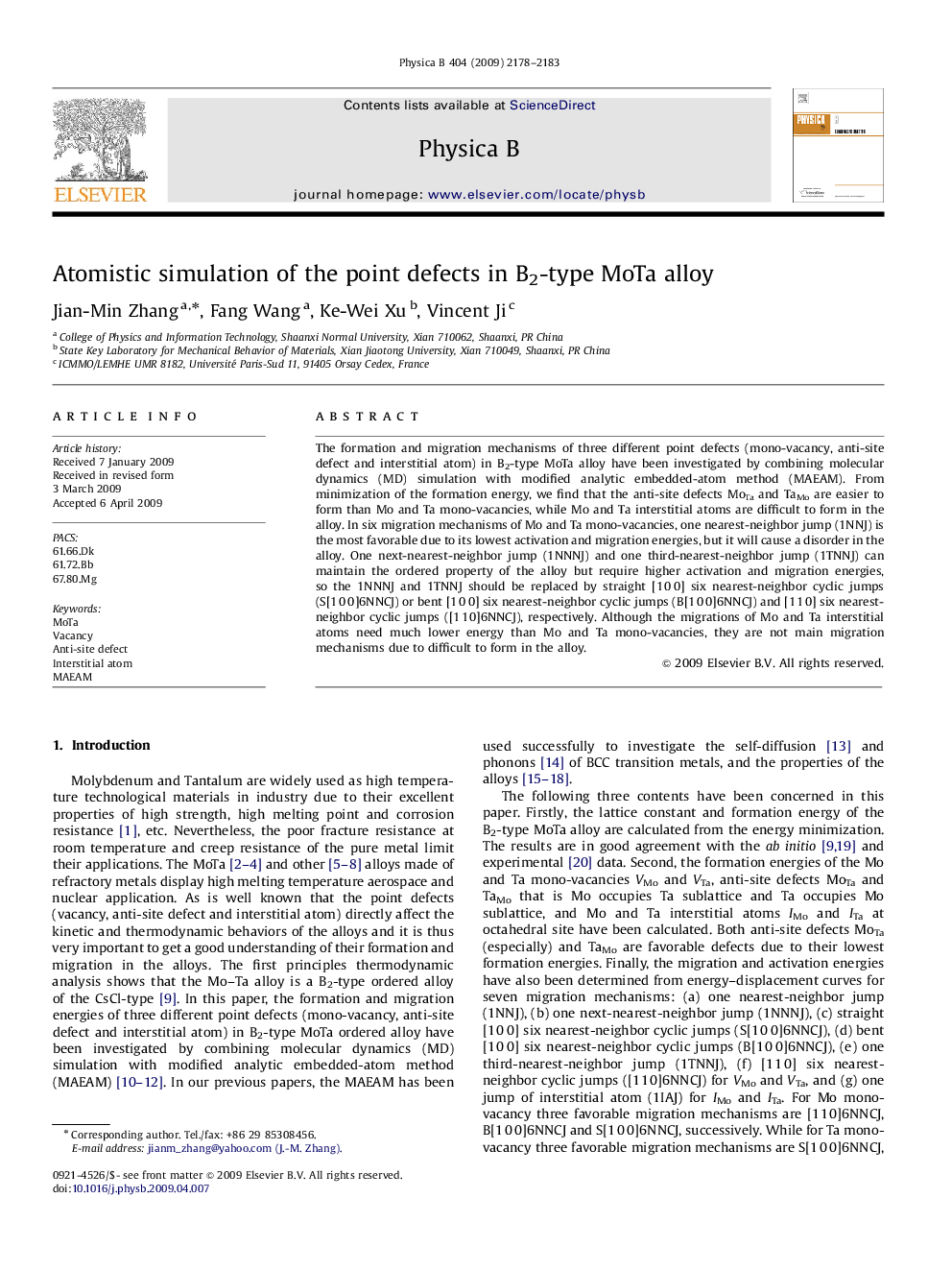| Article ID | Journal | Published Year | Pages | File Type |
|---|---|---|---|---|
| 1814676 | Physica B: Condensed Matter | 2009 | 6 Pages |
Abstract
The formation and migration mechanisms of three different point defects (mono-vacancy, anti-site defect and interstitial atom) in B2-type MoTa alloy have been investigated by combining molecular dynamics (MD) simulation with modified analytic embedded-atom method (MAEAM). From minimization of the formation energy, we find that the anti-site defects MoTa and TaMo are easier to form than Mo and Ta mono-vacancies, while Mo and Ta interstitial atoms are difficult to form in the alloy. In six migration mechanisms of Mo and Ta mono-vacancies, one nearest-neighbor jump (1NNJ) is the most favorable due to its lowest activation and migration energies, but it will cause a disorder in the alloy. One next-nearest-neighbor jump (1NNNJ) and one third-nearest-neighbor jump (1TNNJ) can maintain the ordered property of the alloy but require higher activation and migration energies, so the 1NNNJ and 1TNNJ should be replaced by straight [1Â 0Â 0] six nearest-neighbor cyclic jumps (S[1Â 0Â 0]6NNCJ) or bent [1Â 0Â 0] six nearest-neighbor cyclic jumps (B[1Â 0Â 0]6NNCJ) and [1Â 1Â 0] six nearest-neighbor cyclic jumps ([1Â 1Â 0]6NNCJ), respectively. Although the migrations of Mo and Ta interstitial atoms need much lower energy than Mo and Ta mono-vacancies, they are not main migration mechanisms due to difficult to form in the alloy.
Related Topics
Physical Sciences and Engineering
Physics and Astronomy
Condensed Matter Physics
Authors
Jian-Min Zhang, Fang Wang, Ke-Wei Xu, Vincent Ji,
